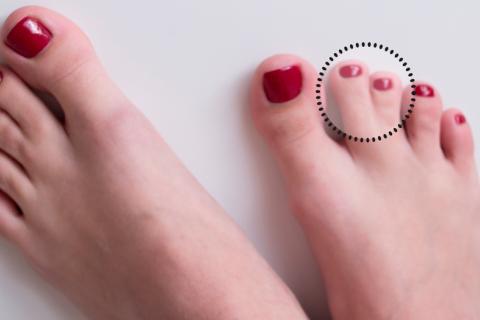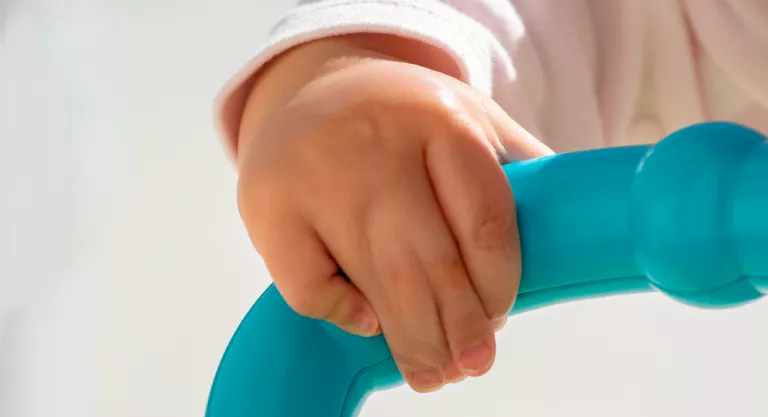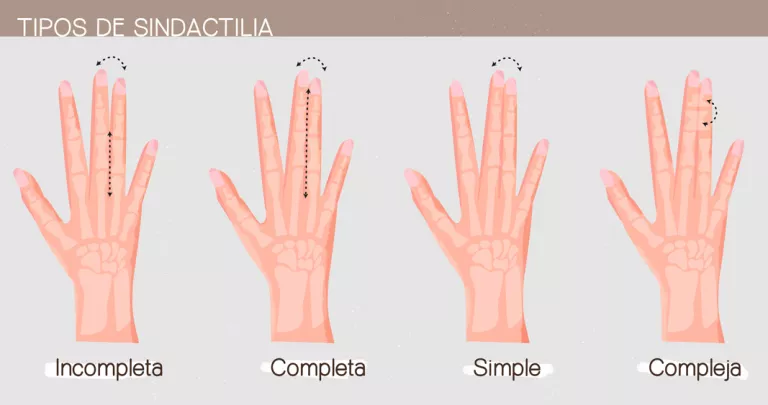
The rhythmic gymnast Almudena Cid, the only one to complete four Olympic finals, has told on her Instagram account that she suffers from syndactyly, a disorder in which two or more fingers or toes are joined by skin, cartilage, or even bone. This malformation can be aesthetically striking, but the most important thing is that only in some patients can it cause functional problems or be associated with greater problems.
Syndactyly is a congenital deformity that appears due to an alteration in apoptosis, the process by which the body gets rid of unnecessary or abnormal cells during pregnancy, specifically between the sixth and eighth week of gestation, which is when the fingers separate. It is estimated that this problem would affect one in every 2,000 babies born and, among the cases that have been documented, the union is more frequent between the second and third fingers.

Apparently, the scientific evidence on syndactyly indicates that it is hereditary. According to the Boston Children’s Hospital (USA), between 10% and 40% of children with this disorder inherit it from their parents. Even so, it has also been associated with diseases such as Down syndrome, Apert syndrome, Carpenter syndrome, constrictive ring syndrome or Poland syndrome, among others.
Syndactyly is a disorder that in most cases does not involve any functional or symptomatic problem, but rather is an aesthetic problem that tends to be hidden.
As explained by Dr. Homid Fahandezh-Saddi Díaz, a specialist in traumatology and orthopedic surgery, “syndactyly is characterized by the fact that the toes or fingers are fused and connected to each other. In addition, it can affect one side, that is, a foot or a hand, unilateral, or both extremities, being bilateral”.
Syndactyly is a disorder that in most cases does not involve any functional or symptomatic problem in the patient, but is rather an aesthetic problem that tends to hide. In some cases, especially in the hands, it can make detailed tasks difficult.
Types of syndactyly and diagnosis
This problem seems to be a congenital disease that can be passed from parents to children, explains Dr. Fahandezh-Saddi. On the other hand, he tells us that there are several types of syndactyly, depending on the level of union and the structures involved in it. Thus, one can differentiate between incomplete and complete syndactyly, and simple and complex syndactyly:

Syndactyly can be diagnosed on ultrasound during pregnancy, although it is more commonly seen after the baby is born. Although it is a disorder that can be seen with the naked eye, “it is important not only to do a physical examination to see the appearance of the fingers, but also to do a radiological study to check if it only affects the skin, or also the bone”, we clarifies the Dr. Fahandezh-Saddi.
Available Treatments for Syndactyly
As we have said before, syndactyly is a problem that in most cases is merely aesthetic, so in many cases it is not treated. This occurs especially in the feet, where it is less visible and, if it does not affect function, it is not common for measures to be taken to separate the toes.
In the case of babies who are born with the fingers of their hands together –whether they are two, or even four–, another factor comes into play, which is the cerebral one, because, for example, if you have all four fingers together, the The brain will not identify each one of the fingers separately, but will interpret that it is only one. This causes functionality problems and must be intervened as soon as possible so that the child can develop their fingers properly and manage to integrate them and move them in isolation.
“When we have the union of four fingers, usually two fingers are separated the first day and another two in another surgery, which is usually spaced about six months. This is due to the fact that, as there is a skin problem and the fingers are joined together, a surgical strategy must be carried out to be able to cover the finger circumferentially once you separate them”, explains the Dr. Homid Fahandezh-Saddi.
Lastly, he concludes that “hands must be operated on as soon as possible, preferably within the first year of life. This is a highly specialized surgery to separate the fingers so that the child can integrate the five fingers of his hand in a totally separate way and, above all, at the brain level. It is a surgery with very good results in the case of the simple ones, and more complicated when it affects the skin and bones”.
.